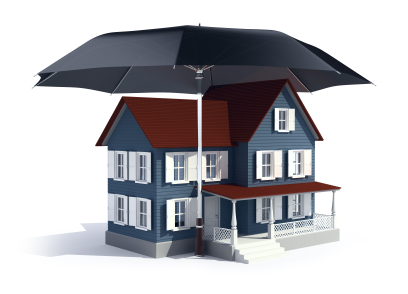The Type of Homes That Are Most Difficult To Insure
Homeowner insurance companies make their money by collecting premiums. With this in mind, insurers prefer homes that are less likely to result in claims. The home of your dreams may be a nightmare to insure if it’s built in a disaster-prone area, is above a certain age or has a checkered claims history. It doesn’t necessarily mean you can’t find homeowners insurance anywhere, but you may end up paying a steep price for it.
Most people buy homeowners insurance from the standard market, but millions of homeowners around the country are forced to buy their insurance on the residual market, which is sponsored by each state and provides coverage when it’s not available through traditional private homeowners insurance companies. If you own one of these hard-to-insure homes, you may have to dig deep into your pocket to get the insurance coverage you need.
#1. Older homes
Interesting architectural features can make older homes unique, but they also can make them more costly to repair. Many don’t comply with modern building codes and contain materials such as lead paint or asbestos insulation that are now considered dangerous. At the same time, older homes typically have outdated plumbing and electrical systems. The best of them are built with construction methods that are expensive to reproduce, increasing repair costs, as well. If a consumer owns an older home, insurers will be interested in learning about any upgrades, remodeling, and updates that may have occurred over the years.
#2. Owner-Caused Issues.
Some homes are hard to insure not because of the home, but because of their owner. Certain breeds can be expensive, not in terms of what you pay for them, but in terms of insurance liability. You may find your insurer will set limits on the amount it will pay for a dog-bite liability claim, with you having to pay the rest out of pocket, or even deny you coverage if you own certain breeds, such as a pit bull. Because they are perceived to be more dangerous, increasing the insurer’s liability risk. In some cases, you can only get coverage if you take your dog to obedience classes or make sure he’s restrained.
#3. Homes with a trampoline or pool.
Having a swimming pool or trampoline might make for good summertime fun, but your homeowner’s insurance company may see them as an “attractive nuisance” that can tempt children to come into your yard when you’re not home. You also run the risk of someone being injured on your trampoline or hurt or killed in your pool, and you could be sued. Some insurers may refuse to insure your home if it has a pool or trampoline, or charge you higher rates.
#4.Type of Electrical Box
Copper is the only type of wiring most home carriers will readily accept. Couple this with an updated electrical verses fuse box at 100amps or more. If you see a mix of aluminum and copper, that can be really bad or just aluminum the carrier is likely to say “Not interested”. Unless the homeowner can show proof that the wiring was updated and meets local code standards. Because aluminum wiring tends to heat up at junction points, many insurers either won’t cover a home wired with such wiring or charge more for coverage. Older homes that have fuse boxes instead of circuit breaker panels also typically are harder to insure. Electrical wiring can cause a significant fire risk, and if your house has faulty wiring, it might be difficult to insure.





